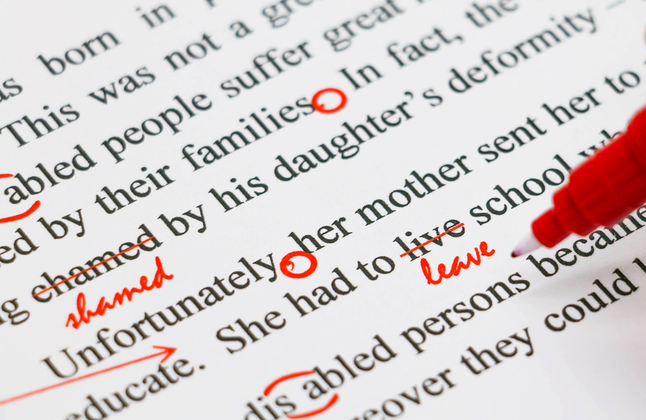
In a perfect world, your class would relish the chance to go back and edit writing. But the reality is, students hate it. Once they’ve handed in a piece of work, they never want to see it again!
It’s a challenge to get them enthusiastic about improving writing. They find the process boring and fail to see its importance. So how can you teach your students how to edit whilst keeping it fun?
The answer lies in changing the format. Banish boring worksheets and embrace the excitement of anonymous editing. Get your whole class working together and watch the improvements.
Why is Editing Important?
We know that editing improves classroom writing. Without it, students’ work is riddled with mistakes, unclear and repetitive.
Have you noticed that learners keep making the same mistakes, even though you’ve clearly shown them errors? They don’t seem to notice the feedback we give them. They’re far more like to remember errors they found and corrected themselves.
Reading back through their writing helps them spot:
- Problems with grammar and spelling
- Sentences that are unclear
- Poor word choices
- Badly planned paragraph order
- Lack of flow
- Inconsistencies
- Repetition
Ideally students would benefit from editing their own work, but they struggle. Any adjustments become a chore. That why peer editing has such power.
Anonymous Editing
Students can spot errors in their friend’s work that they can’t see in their own. But how can they concentrate on a friend’s writing when they know someone in the classroom is reading their work?
You can imagine their internal anguish:
- Are they laughing at my writing?
- What if there’s a stupid mistake?
- They are so much better than me!
Using anonymous editing and feedback provides an easy solution for your learners. You can reduce embarrassment and make the experience enjoyable for everyone.
Before you begin, teach your students how to give feedback. They need to learn what good editing looks like, what they should look out for, and work with your modeled examples. Assume it will take them a long time at first, but with practice they’ll get quicker.
Then they’re ready to move on to reading and suggesting edits for an unknown person in the classroom.
5 Anonymous Editing Ideas for Your Classroom

Here are five ideas to help you use anonymous feedback with your class:
1: Secret Envelopes
Add excitement by putting finished writing into envelopes. Students can select which one they will edit. If you’re worried about differentiation, consider using different colors or alphabet letters to help organize them. You could give struggling students extra prompts or scaffolds to help.
If you use an online learning platform, send an email or message with an anonymous piece of work attached. Students could edit it as a homework task and send it back electronically.
2: Class Blogging
If you have a class blog, add all the finished pieces of writing, but keep them anonymous. Did the class write by hand? Simple scan and upload them as images to your blog to save typing them out.
Ask your students to choose three pieces to comment on. Make their responses meaningful by giving them a checklist or frame for writing. Just remember to check what they’ve said before comments are posted online!
3: Online Editing Tools
Use a free online editor such as ProWritingAid to help your students explore editing. Using an online editing website will help your class move beyond blindly auto-correcting every wiggly red line on Word!
4: Make it Look Different
Hands up if you always end up using the same template for editing- guilty!
Too often we get busy and grab what we’ve done before. It worked well then, but now the class are bored with the all-too-familiar routine. Making a few simple changes about how a task looks can reinvigorate them.
Try these ideas for injecting something new into anonymous editing:
- Students recording videos or podcast critiques to play to the class
- Different colored paper to write on
- Creating a presentation
- Writing edits on sticky notes or speech bubbles
- Role play scenarios (such as editors in a publishing house)
- Different pen colors, stickers, and highlighters
- Make it into a display
- Let students decide their own format
Here’s how one teacher used sticky notes to transform the culture of feedback through anonymous peer editing in their school.
5: Secret Teacher
Think ‘Secret Santa’ used for peer editing. Students secretly receive a piece of writing, give feedback, and return it to you. The class never find out who edited their work.
Offer a bank of helpful sentence starters for any struggling students to use. Key questions, templates, and examples will help them access the task without giving the game away.
Final Thoughts
Editing works best when there’s time left between completing writing and improving it. Plan to go back to work completed earlier in the term. This is a great way to include distributed practice in your English lessons.
We know that editing is important, but it gets crowded out of our busy curriculum. Now is a good time to review what you teach over a whole year. Where could you reduce the amount you cover to focus on quality? Spending a week teaching editing skills has more impact than editing for one hour at the end of each block of narrative writing.
Give editing the importance it deserves by making it an exciting part of English lessons. Just a little fun and creativity will transform it from something they dread to something they look forward to.
Banish those boring worksheets and get creative. Your students will thank you for it.


